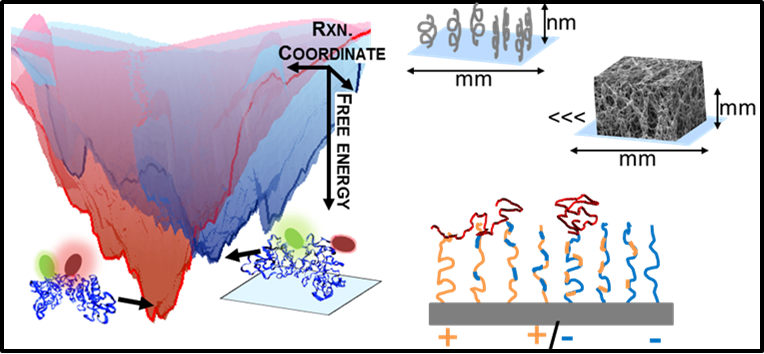The powerful capabilities of proteins have inspired their use at abiotic, material surfaces for diverse applications as biosensors, biologic pharmaceuticals, tissue engineering scaffolds, and drug targets. When proteins interact with materials, their structure and conformational dynamics, and hence function, can be altered compared to those in solution and in vivo. But determining how surface materials alter protein folding stability in situ is difficult with current, mostly noninterfacial techniques. We are developing Fast Relaxation Imaging (FReI) to understand the design rules of materials that enhance protein folding stability and function. FReI has been used previously in-cells, but currently has untapped potential to study biomaterials. By extending the FReI approach to studies of protein folding on hydrogels, polymer brushes, and gradient materials that enable methodological measurement of a “library” of diverse surface compositions on a single substrate and to see how design rules translate from microscale to nanoscale materials.
